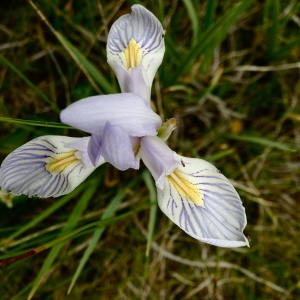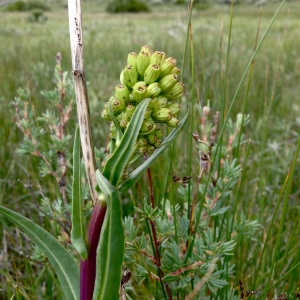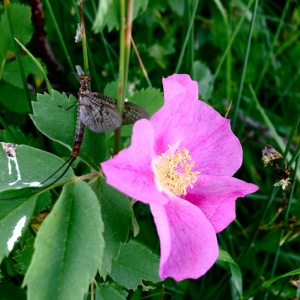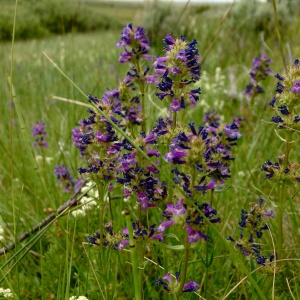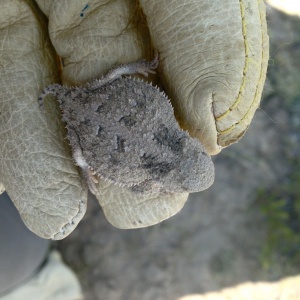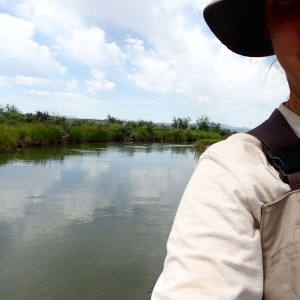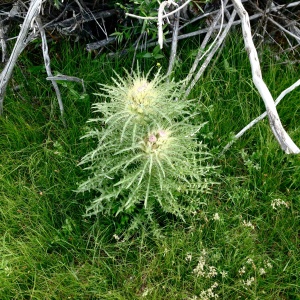Phew, what a crazy busy two and a half weeks it’s been! The CLM training at the Chicago Botanic Garden was wonderful. After a full week of learning from all different types of people that are associated with native seed, I became wholly inspired, and more importantly, empowered. Empowered by knowledge. For example, now when someone asks me what I do and the usual follow up question why, I can answer them like I actually know what I’m talking about…Score!

Me and Laura Holloway enjoying the Japanese Botanic Garden in CBG

Best Italian sub in the World, Chicago

Oh yea, plants, Orchid in the tropical green house of CBG

Oh yea, plants, Orchid in the tropical green house of CBG
After coming back into Portland, OR late on Sunday evening, whoops, maybe Chicago just did not want to see me go too soon…. I spent a day and a half in Portland waiting to catch the Bolt Bus up to Seattle, WA for a Grass Identification class. The class was held at the University of Washington and Discovery Park for 3 days. I, of course, waited until the last minute to book a hotel. Therefore, none were available under $200, so it was the hostel life for me. At this point, I am 11 nights without sleeping with personal space.
The Grass workshop was Poaceae Botany Bootcamp. We learned the anatomy of grasses as well as their implications for management as invasives and restoration species. We also learned that humans planting grasses as cereal grains basically attributed to the advent of human civilization. Now I know why I love cereal so much (instinctual, maybe?). One of the many goals of the class was to come out able to field ID 25 genera, um, I got a couple down, but let’s just say, I’m glad there was not a test. Also, now I am excited to collect many grass seeds for SOS. There is that empowerment by knowledge again.



Bolt bus took my back to Portland, OR for a long 5 hours trip; in traffic for 21/2 of them. Apparently, President Obama was flying into Seattle, so they closed down the freeway. I mean, I get he’s kinda a big deal, but torturing thousands of people that just wanna go home on a Friday evening?, No one is that important. Anyway, I stayed the weekend in Portland (I could not miss the World Naked Bike ride this past Saturday). By Sunday, I have not slept in personal space for 15 days! Sunday afternoon I drove back to Tillamook. Unfortunately, pack rats moved into my place while I was out and colonized 2 drawers and a cabinet, leaving only carnage behind (what I do to feel like a mountain woman, sigh). I am lying, falling asleep in my own bed, in my own room, in my own apartment and I open my eyes to look around because in sleepy fog, I forgot where I was.

I come back to find my Frye boots and Teva Sandals rigged apart with rat poopies ornamenting the crime scene.
Today, Wednesday 29, I went to another training in Lowell OR, and learned how to use Plant Associations. Assessing where groups of plants grow gives us clues about the type of environment (ie climate, soil, and topography) and vis versa of a particular site. When assigning plant associations one studies a plot of land 1/10th of acre in size and surmises what type of micro ecosystem and environment is present. These associations help agencies make informed land management decisions dealing with tribal contributions, timber (resource) extraction, as well as foraging ground. The only reason I could write this paragraph is because today I became empowered by this knowledge.

USFS and BLM employees from all different departments coming together to learn about plants
Thank you CLM and BLM for encouraging training and education in what I find most interesting. After my 2 1/2 weeks in 4 different cities, I will be delighted to return to the field to apply my newfound knowledge and skills.



































